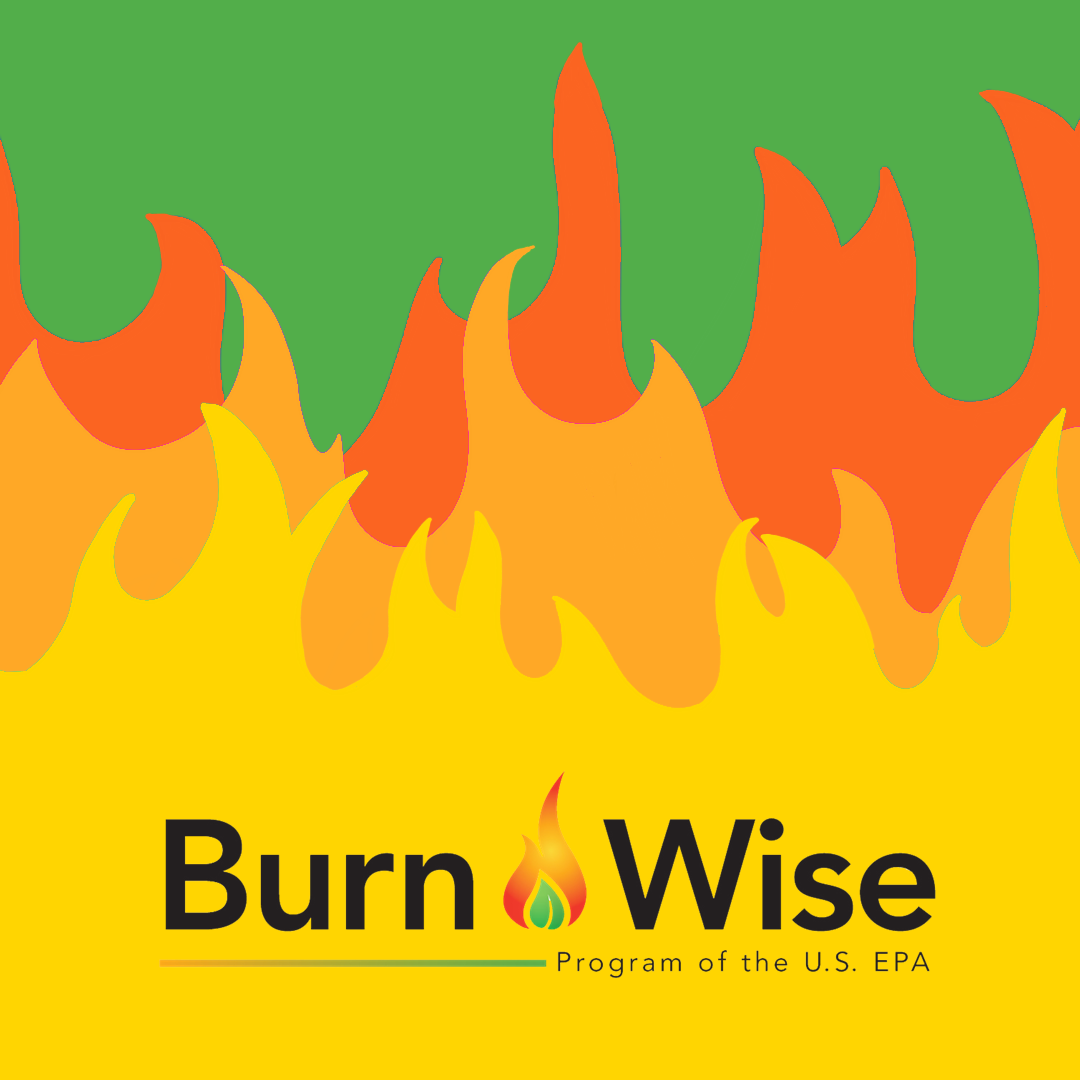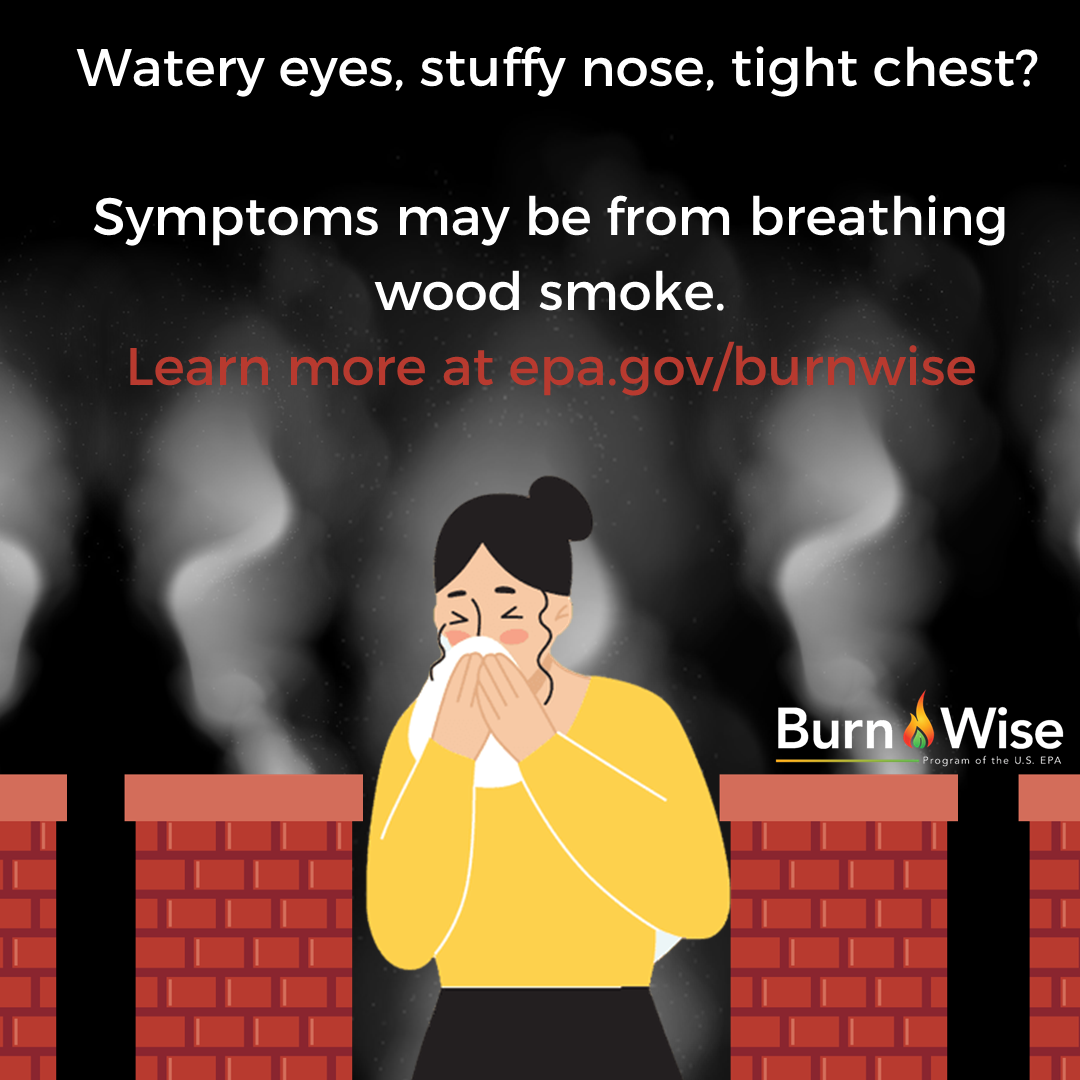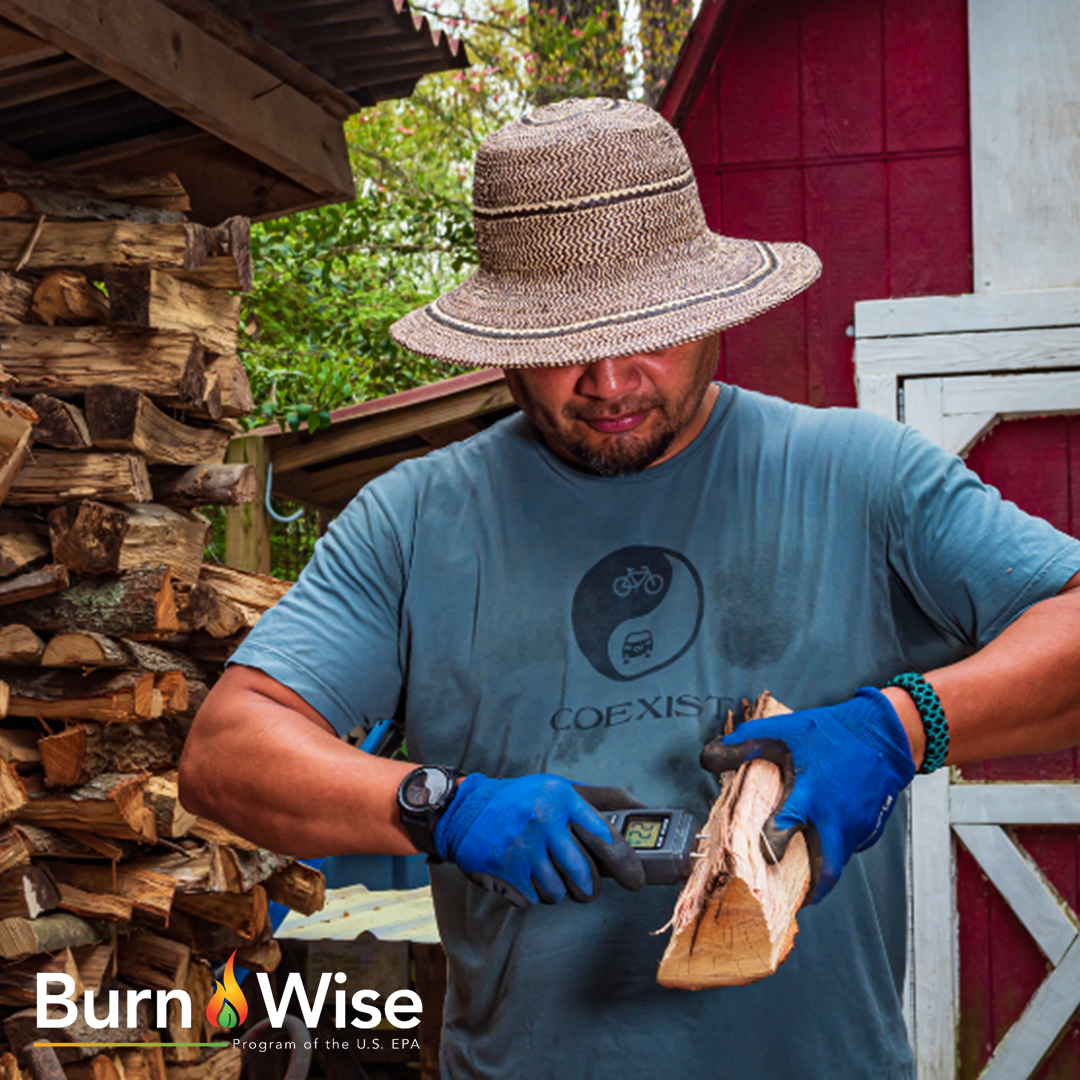Social Media Resources: Burn Wise Health and Safety Awareness Toolkit
Use these social media resources to raise awareness and encourage safer, more efficient, and cleaner heating practices in your community.
Feel free to use the sample text and graphics, or make your own unique post!
RETURN TO TOOLKIT HOME
Burn Wise Website
Throughout your messaging be sure to direct people to www.epa.gov/burnwise for a rich assortment of content including videos, educational materials, tips on best burn practices, and a searchable woodstove database.
Hashtags
#BurnWise #BurnSafer #BurnCleaner #BurnBetter #BurnEfficiently
Sample Social Media Posts
Copy the post, or use them as inspiration for your own content.
#BurnWise

Instagram + Facebook: Millions of Americans heat their homes with wood stoves, but over 2 million of these stoves are not EPA certified. Learn more about saving time, money, and cleaner burning at epa.gov/burnwise
X: Over 2 million woodstoves in the US are not EPA certified. Learn how to burn better by visiting epa.gov/burnwise #BurnWise
#BurnSafer

Facebook + IG: Three of every ten house fires caused by home heating are due to poorly maintained fireplaces and dirty chimneys, according to data from the National Fire Protection Association. This is most often caused by creosote buildup, which can be easily avoided. Take action now to keep your family safe this winter. Visit epa.gov/burnwise to learn more.
X: According to @nfpa, three out of ten house fires caused by home heating are due to poorly maintained fireplaces and dirty chimneys. This is most often caused by creosote buildup, which can be avoided. Take action to keep your family safe. Visit epa.gov/burnwise to learn more.

Facebook + IG: According to the National Fire Protection Association, heating equipment (including wood stoves) is the second leading cause of home fires, and third leading cause of home fire deaths. Take action now to keep your family safe this winter. Visit epa.gov/burnwise to learn more.
X: According to the @NFPA, heating equipment is the 2nd leading cause of home fires, and 3rd leading cause of home fire deaths. Take action now to keep your family safe this winter. Visit epa.gov/burnwise to learn more. #BurnSafer #BurnWise
#BurnCleaner

Facebook + IG: Watery eyes, stuffy nose or chest tightness? These can be caused by breathing wood smoke. This season make sure your stove or fireplace is in good working order. Learn more to protect your health: www.epa.gov/burnwise/wood-smoke-and-your-health
X: Watery eyes, stuffy nose, tight chest? Symptoms may be from breathing wood smoke: Visit epa.gov/burnwise/wood-smoke-and-your-health to learn more. #BurnBetter #BurnWise
#BurnEfficiently

Facebook + IG: Do you know if your firewood is dry enough to burn efficiently? There's a simple way to find out. For around $20 you can buy a moisture meter to test it. Dry wood burns more efficiently, with more heat and less smoke-- ultimately saving you time and money. Visit epa.gov/burnwise/test-your-wood-moisture-meter to learn more.
X: Is your wood dry enough to burn? Dry wood saves money since it creates a more efficient, hotter fire, with less smoke. Visit epa.gov/burnwise/test-your-wood-moisture-meter to learn more. #BurnEfficiently #BurnWise
#BurnBetter

Facebook + IG: Did you know that smoke can be a sign that your firewood is too wet? Be sure to follow these four steps to dry your firewood: split, stack, cover and store. Firewood should be split, stacked with the top covered, and stored for at least 6-12 months. Learn more about these 4 steps in this two minute video: www.youtube.com/watch?v=yo1--Zrh11s
X: Did you know that smoke can be a sign that your firewood is too wet? Firewood should be split, stacked with the top covered, and stored for at least 6-12 months. Learn more in this two minute video: https://www.youtube.com/watch?v=yo1--Zrh11s #BurnBetter #BurnWise
